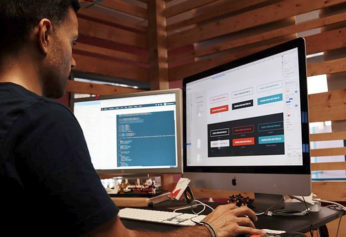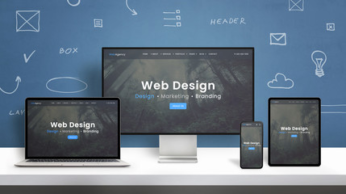| The time for the website promotion might range from several days to months. With manual SEO, the implementation of on-page and off-page optimization tasks could be really tedious. Thus, automated SEO is widely used by many webmasters these days. Owing to SEO automation tools and software, it takes less time and effort for search engine optimization activities. It is sometimes considered that automated SEO could not benefit your website promotion. On the contrary, automatic SEO was believed to be hazardous and even harmful. However, this statement is far from reality because the effect of automated SEO is the opposite. It helps SEO teams to streamline repetitive tasks, which allows dedicating more time to other important SEO activities. What is automatic SEO? The principles of automatic SEO imply the utilization of software to perform daily tasks faster. As a result, effective SEO teams become more productive when using SEO automation tools. Automated SEO considerably reduces the amount of time and resources spent on various SEO activities. Automated processes provide a possibility for webmasters to spend less time on routine daily tasks. While an SEO expert may spend minutes on finding broken links, for instance, an SEO automation tool can accomplish that in seconds. How does automated SEO work? The concept of automated SEO refers to the desktop software and utilities designed to streamline activities dedicated to search engine optimization. Automation tools assist webmasters in repetitive tasks that could be easily systematized. Those are usually related to position tracking, backlink profile analysis, finding broken links, site audit, and reporting. To get the most benefits out of automation, webmasters first need to decide which processes to streamline. Based on that, dedicated SEO automation tools should be selected for facilitating chosen activities. Read more: Importance of automation for your website & SEO team |
| A million different things go into running a business, so it can be alarmingly easy to forget some crucial components. Arguably the most important of these is your website. It might surprise you to learn just how significant your digital presence is and the impact it can have on your audience. Of course, as an eCommerce owner, you already know that a website matters in terms of purchases—without one, your customers wouldn’t be able to buy your products. But what you may not know is the influence it has on consumer assumptions about your brand. There’s a lot more to an eCommerce website than its product page and shopping cart. Here, we will be explaining all of that to you and why effective web design for eCommerce matters. It Is the Store-Front of the Digital Age For better or for worse, the high street is declining in popularity, and the importance of online marketing is increasing. As one Europe digital agency explains, rather than your shop window, customers will be judging your website. It could be the deciding factor between a purchase or a pass. If you want to secure a larger audience, you need to ensure your shop window is looking its best. If a potential client lands on your site and finds the site disappointing, they won’t bother looking at your products or services. Don’t get lax, and don’t let customers slip through your fingers—invest in web design! Read more: The Importance of Effective Web Design for eCommerce |
A well designed website can provide you with faster results.
Who doesn’t love faster results and more sales? If you’re like most businesses, then you’re always finding ways to scale your business.
A great way to minimize your risk while driving results is to work on a growth-driven design for your website. This allows you to focus on data and audience analysis to make changes for the needs of your visitors.
We’ll dive deeper into what growth-driven design (GDD) entails, along with the differences between traditional website design and GDD, and great tools to help you on your website design journey.
What Is Growth-Driven Design?
Growth-driven design, often shortened to GDD, is a progressive approach to website design that helps businesses drive optimal results while reducing common pain points for their site visitors. A website design that is growth driven is optimized for lead generation, offering frictionless conversion paths so visitors can convert easily.
Unlike most hungry people to keep up with trends and careful not to miss out on the most popular ones, designers are different. They feel a little limited by trends. However, for an agency that does web design London, it is essential to learn what trends are in and those that are long-dated.
This is because learning about new trends helps learn about customer preferences and their changing tastes. In the long run, designers can offer products or services that are agreeable to their clientele.
There’s no doubt that internet users are highly visual. As a result, it is essential that a web designer puts their skills to practical use and helps customers understand the different services and products they offer. Let’s look at some of the web design trends all designers should be aware of in 2020.
Digital Illustrations
If you use digital illustrations in your web design, you are bound to have work that looks unique and stands out from the pack. An excellent illustration can help you to form a connection with your customers.
If your site has product descriptions or adverts, then a web designer can design it to suit such items. Illustrations that are popular right now amongst web designers include three-dimensional illustrations and flat, hand-drawn illustrations.
Read more: Web Design Trends for You Should Explore
Virtually every startup business requires web development support. After all, it’s nearly impossible for a new company to generate interest and attract customers without a compelling, responsive website. What’s more, many small businesses rely on outsourced web developers to help them set up and expand other key digital features –– like ecommerce stores or chatbots. Eventually, though, some businesses may benefit from moving their web development team in house. This could help a company save money, become more efficient, and deliver improved customer experiences. With all that in mind, today we’ll share three tips for business leaders looking to pull off this tricky, but crucial, transition. Check them out here:
Retain Backup Support
Moving a complicated process like web development in house is going to take a lot of time and plenty of internal readjustment. As such, it makes a lot of sense to retain at least one or two web development freelancers who can help your new team handle their workload and become acclimated to the challenges they may face. Web development teams may need months to get in sync with each other and to develop meaningful solutions.
Create a Blueprint for Success
Not all web developers have the same skill sets or areas of expertise. That’s why it’s crucial for small business owners to determine how they want to progress their digital identity for years to come. Figure out if you want to build a new website, redesign your current one, create satellite sites, or improve your ecommerce setup before you begin the hiring process. Having specific assignments in mind will allow you to find web developers with relevant experience and qualifications.
Read more: 3 Tips for Moving Your Web Development Processes in House
Irrespective of your organizational structure or size a website is hard to indispensable. An attractive website is not enough, as customers have to be driven to the site. Only if the website is attractive customers would stay there and sales figures would scale new territories. In the present era of COVID-19, this posses to be a considerable challenge.
Only a handful few small businesses have the financial capacity to afford services of the website development business. The better news is if you focus on a few basic principles on anticipated lines you can derive true value for your investment.
Tips to enhance web development business during the pandemic
Business-oriented approach
Be aware that the website works out to be a business tool and a quality design is essential. Ideally, it should be business-driven and your current and future customers can engage with the company via a quality website. Regular branding and promotion of your company starts off with a quality website and from there stationery, marketing along with other activities start.
Review and develop measures
Sometimes you could be happy with the layout and design of your website. But the need of the hour is to evaluate the performance of your website on a regular basis. Does it align with the customer needs or has the design changed considering the market trends? Check with the graphics, content or the design is a relevant one. For example, if the website is operational for numerous years, it is difficult to adopt an objective approach.
Design differentiation
People who have a shorter attention span might be forced to leave the website within a short time frame. At this juncture, design has a role to play. Due to improved design and higher bandwidth of the internet, the design of a website has developed. Images along with graphics have assumed new proportions and we are well on the way to be establishing a greater brand identity. Another way you could differentiate from the completion is via a graphics design.
Recurring development
A website should not be static and needs to be continuously developing. Sadly most people fail to acknowledge this fact and once a website is over they feel that a task is accomplished. But you have to update the website on a regular basis in terms of content and design. Developing blogs and providing links to the website are ways to achieve the task. A reason for its importance is clients along with visitors have a liking towards attractive sites. Even Google is bound to revise their listings if the site is not updated on a regular basis.
Reaching number one
When a customer is searching for a service or product, they would be availing services of a search engine. It is important that your site is mentioned on the search engines. Smaller companies are of the opinion that only the large companies can reach the number one rankings, but this is a myth. If you have a proper strategy in place it is possible to reach the number one rankings easily.
Sort out the priorities
When marketing any component of your business, it is necessary that you have a clear strategy in place. Even when marketing your website it is no different as you have to formulate short term and long term goals and a web designer might not justify the decision. Designers often lack the concepts of SEO and the basic versions of Meta tags would not suffice. For example, even if you have an active marketing strategy sales figures would not substantive.
Read more: 10 Tips to Grow Web Development Business During COVID-19
Often when someone talks of a website, the frontend where the user/visitor interacts is what comes to mind. However, the backend is where most of the magic happens. This backend has been said to be the engine of a website, as it is where developers get to define how the website will function.
With the growth in the complexity of technology, frameworks have become an integral part of web development. Depending on the features and functions you want your website to perform, the framework you choose will determine the nature of the success and functionality of your website. The best developers are versed with these latest technologies, but most specialize. Here, we will feature some of the top web development frameworks in the market to help you make a decision.
Express
In recent years, Node.js has grown in popularity within the developer’s community. Consequently, Express has gained a reputation as one of the most preferred backend web development frameworks. The popularity is attributed to it being minimal and flexible while giving room for robust features a developer needs. This flexibility makes it suitable for single-page and multipage/hybrid web applications alike. Perhaps the most appealing characteristic of the Express framework is that it leverages Node.js performance, allowing for a light coating of web applications without obscuring the node’s features.
Read more: Effective Backend Web Development Technologies In 2020
The web development industry is quickly evolving, and companies need to keep ahead with innovations to stay competitive in the online world. Web development trends might seem to change even faster than they are implemented by most of the enterprises. However, if you want to position yourself an innovation-driven brand and trendsetter, you must be aware of all the current web tendencies. To help you navigate the latest web development trends and save time spent on the market investigation, I provide an intensely concentrated piece of information in this article. Meet the six most popular web development trends that are gaining momentum in 2020.
A progressive web app is a website with the same functionalities as native apps. It is fast-loading and can work both online and with a bad Internet connection. PWAs allow users to enjoy a high-end experience and forget that they still are using the web browser. The world-known brands like Forbes, Twitter, and Alibaba have already unlocked the benefits of PWAs for the excellence of their online presence.
Progressive Web Apps (PWA) and Accelerated Mobile Pages (AMP)
A progressive web app is a website with the same functionalities as native apps. It is fast-loading and can work both online and with a bad Internet connection. PWAs allow users to enjoy a high-end experience and forget that they still are using the web browser. The world-known brands like Forbes, Twitter, and Alibaba have already unlocked the benefits of PWAs for the excellence of their online presence.
Along with PWAs, we can also see a similar trend. It’s an AMP (an accelerated mobile page), an open-source HTML framework developed by Google as a competitor to Facebook instant articles. AMPs also load very quickly and display only the essential information like text, images, etc., omitting unessential UI elements. They might be a perfect choice for websites oriented at publishing news and articles.
Animation in UI
Motion graphics is one of the biggest web design and development trends this year. The business can greatly benefit from motion graphics in website design and leverage its power to increase visitor engagement, guide them throughout a site, demonstrate relations between components, visualize information in dynamic charts and beautiful graphs, and more.
Besides functionality, the visual experience is one of the key factors to success in software development. Users love brands that offer them something more exciting than a straightforward layout. Keeping things simple and caring about the UX intuitiveness, you can also consider adding the background motion graphics, animated hovers, beautiful transitions in a header and footer, modular scrolling, and other UI animations. Although it adds to the development time, motion graphics in UI is worth it since it increases the end-users’ satisfaction and helps turn them into returning customers.
Read more: 6 Web Development Trends Every CTO Should Know in 2020
What would the world look like without the internet? It’s a question that we’ve all wondered to ourselves at a certain point, but in reality, the question we should be asking is, “What would the internet look like without websites?”
We’ve come a long way since the dot com revolution of the late 1990s and early 2000s. Languages and capabilities have evolved to the point where the sites we visit are faster, designed for experiences across devices and ultimately more powerful in just about every aspect. Because of the work of engineers, developers, designers, project managers and several others in a long line of professionals, the web continues to become a more beautiful and innovative place.
Many of the most savvy web professionals have established web design and development companies in San Diego and are working with clients to deliver stronger website capabilities across industries.
BAREFOOT SOLUTIONS
What they do: Barefoot Solutions is a designer and developer of applications for websites, mobile devices and IoT devices that delivers better user engagement and outstanding ROI. An in-depth strategy, design and development process that includes acquiring audience insights, prototyping, visual design, coding and product launching allows Barefoot Solutions to provide top value to their clients and create applications that remain powerful over time.
BOP DESIGN
What they do: Bop Design is a B2B marketing agency specializing in web design, branding and content marketing services for brands across a wide range of industries. Web design services from Bop Design are built on a customized WordPress engine, developed to include heightened capabilities and responsiveness so users always find a pleasant experience.
Read more: 15 SAN DIEGO WEB DESIGN AND DEVELOPMENT COMPANIES MAKING THE WEB MORE POWERFUL
According to the Digital 2019 report, a typical person spends 6 hours and 42 minutes online every day. The rise of the internet has revolutionized how we live and communicate and moved most of us to live a digitally-driven lifestyle. This is now exacerbated as we live in a ‘new normal’ because of the COVID-19 pandemic where we are pushed more than ever to rely on the internet for entertainment, education, employment, and livelihood among others.
With everyone depending on the internet for their access to necessities and supplies (i.e., food, appliances, medicines, clothes, among other products and services), website development has become more crucial to any business’ success. Website development is one of the ways to ensure the success of your business by informing people of products and services your business offers, getting to know your (possible) customers better, and understanding how to improve your product and service further.
Website or web development services include building, creating, and maintaining websites. It includes aspects such as web design, web publishing, web programming, web content creation, and database management.
Having an online presence is no longer an option for businesses; it is a requirement! Here are more of the reasons why companies need to invest in web development services:
Increasing Accessibility
It allows businesses to be accessible at any time of the day. It provides space for everyone to access the information they need when they need it. Whenever customers need to know something about the business, having a contact form, a live chat, an option to comment, or a phone number is a step towards them, which increases the possibility of sealing the deal.
Proving Credibility and Reliability
It allows effective communication with customers. Interacting and engaging with customers shows that the business is concerned about their satisfaction and is responsive to their needs. People prefer to transact with a business with their own websites as it gives them security and assurance.
Expanding Reach
It helps businesses to expand their reach by attracting possible customers or leads. Through website development, testimonies about your product/service will be available. These details help earn the trust and confidence of potential customers in the future. A properly designed website can help build an audience, target niche customer bases, and quickly return your investments. Your website conversion rate can multiply by 200-400 percent if your webpage is well-designed and has a functional, responsive interface.
Read more: The Importance of Investing in Web Development for Your Business








